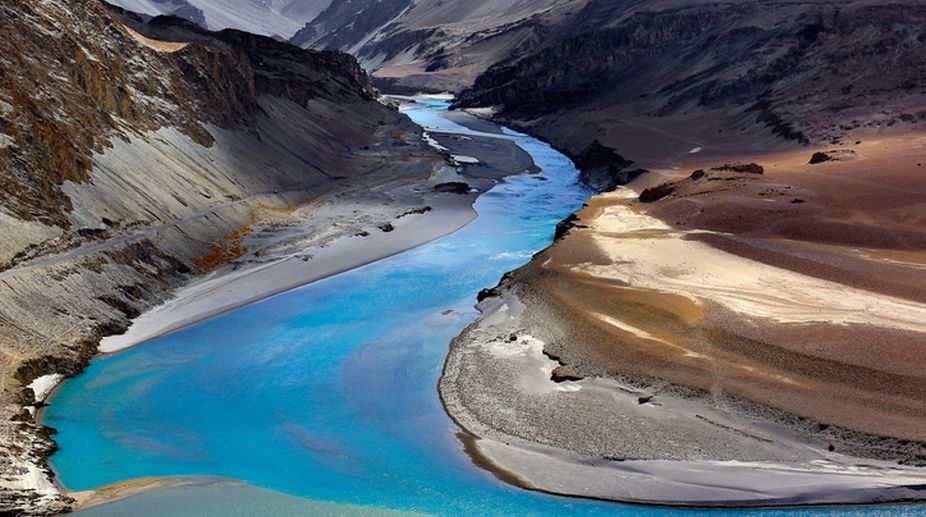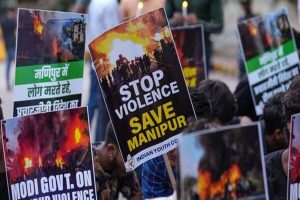The Indus Waters Treaty (IWT) of 1960 is an important landmark in the bilateral affairs of India and Pakistan. When the country was divided in 1947 no issue seemed more likely to lead to violent conflict than the sharing of the waters of the Indus and its tributaries. For each of the two new countries, the Punjab, already torn and devastated, was the crucial breadbasket, source of food security and repository of hopes for the future, and neither felt it could afford to lose any part of the water supply from the elaborate modern irrigation system of the Indus that had brought prosperity to the expanses of the north Indian plains. But the terms of Partition took little account of this requirement; the boundary line bequeathed by the British made an impossible tangle of the irrigation system of Punjab, with the head works often located in India while the canals were downstream in Pakistan. In the seriously disturbed conditions of the time it was feared that unresolved claims on the waters could drive the two countries to war. In the event, these apprehensions proved unfounded but in the charged situation of the time there was real fear that the issue could spin out of control, which brought the two countries to make a serious effort to come to agreement so as to head off risk of conflict.
The IWT needs to be seen against this background as something more than a water-sharing arrangement, for it has features of a basic agreement aimed at preserving the peace. The gravity and complexity of the issues is such that negotiating the IWT was a long-drawn and immensely complicated process. Apart from the sustained effort of the two principals, it also needed the good offices of the World Bank to bring it to a conclusion, both as a facilitator and as a source of funding for dams and other structures that neither of the countries at that stage could readily provide on their own. To ensure that the agreement would function as envisaged, and that there was no tampering with the agreed arrangements, a bilateral Commission was established to meet regularly and keep a watchful eye on Treaty implementation. It was also decided that in the event of the two countries failing to agree among themselves, neutral experts acceptable to both sides would be appointed to go into the issues, and, eventually, should the need arise, for third party arbitration to decide on conflicting demands and claims. Thus implementation of the IWT is backed by groups of experts who can help maintain agreed procedures and resolve problems of implementation.
Advertisement
Since 1960 when the IWT came into operation, the regular consultation process mandated by the treaty has been maintained, not always smoothly or without dispute, but without any threatening disruption. With this, the IWT has survived decades of the troubled relations between India and Pakistan because both countries continue to find value in what it provides, and also because from the start it has been strongly backed by the World Bank. Meetings of the Commission have helped resolve many complex technical differences that could have threatened the IWT if left to themselves. As the lower riparian, Pakistan has always been very alert to anything that can look like denial by India of its proper downstream share of the water, and from time to time it has indulged in allegations of large-scale diversions by India. However, such suspicions have only reflected the general mistrust that affects bilateral ties and were unsupported by evidence, for it is obvious that engineering works for diversion structures cannot be constructed by stealth or be concealed from view.
Another supposed infringement by India that figured at one stage in Pakistan’s complaints arose from what were believed to be the military implications of India’s upstream projects. At least two of them, respectively on the Jhelum in Kashmir and Baglihar in Jammu, were held up because military strategists in Rawalpindi feared the storages could be manipulated to cause floods to gain tactical advantage in the event of Indo-Pak hostilities ~ the fears were always fanciful and had no tangible basis but give an idea of some of the hidden fears that may lie within the IWT.
The main challenge to the IWT, now as in the past, is not to be found in its intrinsic complexity so much as in the uncertain relations between India and Pakistan. As has been seen time and again, a downturn in bilateral relations can lead to demands to re-examine the relevance of the IWT, with it being argued that there is no benefit in continuing to remain engaged at times when India is being targeted by terrorists succoured from across the border. Some considerations of this nature seem to have led India to suspend its participation in the IWT Commission after the Uri attacks last September. Though India did not rescind its commitment to the IWT, it showed its unwillingness to maintain even minimum relations owing to these cross border attacks. Thereafter For some months implementation of IWT was suspended but now it seems the World Bank has been active in persuading the two sides to resume engagement and a meeting of the Commission is imminent. This is to be welcomed for the complicated issues of the IWT require attention if they are not to fester and lead to further complications.
It is not the standoff in the IWT alone that could be affected by the limited resumption of contact now planned, and India’s decision to attend the Lahore meeting can perhaps become a small step towards restoring a measure of normality in overall ties. Dialogue between the two countries has been in suspension but maybe some signs of easing are to be discerned, as in India’s readiness to acquiesce in the appointment of a Pakistani Secretary-General to head the SAARC Secretariat. This is not the first time that India has given its support to a Pakistani candidate, and SAARC has always sought to diversify its Secretariat by making room for all member states. Whatever may be its reservations about Pakistan’s role in South Asia, India has been supportive of SAARC and has tried to enhance its effectiveness by giving it more room for initiative, especially at the level of the Secretariat, so that it can hold its own in a diverse and fast changing world. Bilateral differences within SAARC have thus not been permitted to stand in the way of what can benefit the organization as a whole. The Indian decision to join the consensus in favour of the Pakistani candidate as SG of SAARC can be a small chink to encourage better cooperation in the region and perhaps even help restore some of the presently moribund ties.











